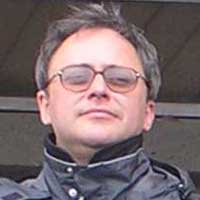Workshop on
Quantum Mechanics: Axiomatics of Measurements and connections with Computing and Information Retrieval
>
VITAE:
Miloslav Dusek is associate professor at the Department of Optics of Palacky
University in Olomouc, Czech Republic. His research activities and interests
cover quantum and coherence optics, quantum entanglement, quantum cryptography,
quantum information processing, and quantum measurement.

Several experimental realizations of optimal symmetric probabilistic phase-covariant 1 -> 2 cloning of qubit states is presented. We demonstrate creation of two copies of any state of a qubit with a fixed latitude on the Poincare sphere (especially of states lying at its equator). The states of qubits are encoded into polarization states of photons generated by spontaneous parametric down-conversion. Our devices are based on two main strategies. One of them is the interference of two photons at a beam splitter with different splitting ratios for horizontal and vertical polarizations. The other use a quantum-state filtering based on polarization dependent losses.
The principle of experiment is based on the interplay of the second-order and fourth-order interference. Further, we propose certain generalizations of the original protocol.